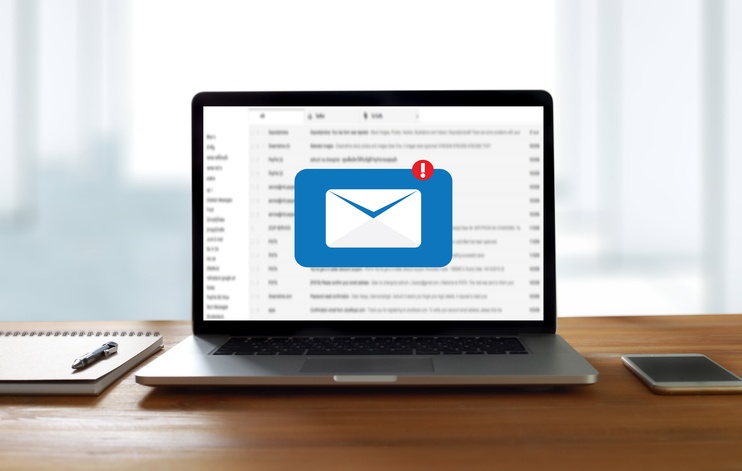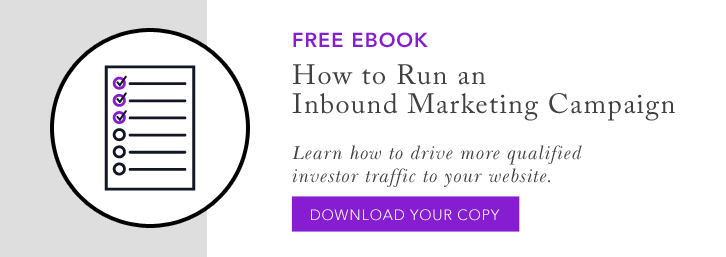Why Financial Advisor Email Marketing is Still Important
Believe it or not, e-mail marketing can be a very effective component of your financial advisor marketing plan, assuming it’s done right.
Some recent reports say that the days of successful email marketing are gone. However, they’re dead wrong. Despite the rise of social media as an alternative way to communicate in the past decade, e-mail marketing remains a proven technique, delivering Return On Investment (ROI) up to 122 percent, according to the Direct Marketing Association. That’s more than four times better than all other marketing techniques examined in a 2016 study.
And despite massive advertising on social media, users haven’t fully embraced it as a way to communicate with companies. Email still accounts for 40 times more business than Facebook and Twitter combined. These same studies show that 73 percent of Millennials prefer to communicate with brands via email, and 86 percent of professionals – a key market for financial advisors – prefer to communicate via email on business matters.
Another huge advantage: Email marketing is getting even more cost-effective as time goes on and new technologies transform the way we use email. From an ROI perspective, email’s value is becoming enhanced as new technologies such as automation and artificial intelligence make it much more cost-effective and affordable to run a meaningful email campaign.
Email is particularly effective in the financial services industry. According to data from IBM, banks and financial service providers report open rates of 21 percent, with a top quartile result of 41.2 percent and a bottom quartile of 7.4 percent.
Are you lagging well behind your industry peers? Take a good look at where your contacts are coming from, and look at tightening up your contact list.
Advantages of email
Financial advisor email marketing has important advantages that alternative means of communicating lack. Here are some of those advantages:
- Email is massively scalable: One “click” can generate a dozen, a hundred, a thousand or even a hundred thousand “touches,” depending on the content.
- Return traffic doesn’t tie up staff or phone lines. You don’t need to operate a call center to field your emails – though if you’re good, you’ll need more staff soon!
- It’s easy to segment your client and prospect base.
- It’s readily measurable and easily tested.
- It’s a cost-effective way to reach a large audience.
- Your message is easily shared.
- Your emails make it easy and convenient for clients to respond to you or visit your website for more information. And you can direct prospects to the landing page you select.
- Emails provide an opportunity for financial advisors to demonstrate their expertise and the kind of value they can bring to the table.
- Emails are easily trackable so you understand how recipients are responding to your communication efforts.
Email has advantages for the reader too.
- It’s convenient.
- It’s unobtrusive.
- It’s easy to scan.
- It’s faster to open than a paper envelope.
- You can quickly scan an email on your phone and read it for detail later on your desktop.
- It’s searchable.
- It’s shareable.
So, how do you get the most value out of emails and what’s the best way to incorporate it into your marketing plan?
- Incorporate your email strategy into your overall Digital Marketing strategy. Start with your website: Make sure your website has several Calls To Action (CTAs) built into the site where visitors can submit their email address to receive your newsletter and/or other offers that are of interest to them.
- Add an opt-in feature on all your websites, including Facebook, Twitter, Instagram and any other social media platforms you use. “Opt-in” emails sail past spam filters and get better open rates, lower bounce rates and better conversion rates across the board.
- Don’t rely on purchasing email lists. Grow your own from a combination of strong Inbound Marketing and good prospecting. Purchased email lists not only don’t work, but they can work against you.
- Use email often. But not too often. Emailing is an inexpensive way for advisors to market, and every (quality) touch brings you closer to a new client. Focus on quality emails, not quantity, so as not to wear out your welcome in the inbox.
- Create “gated” offers on your website and blog. If you have a great offer, you want your website/blog visitors to submit their contact information (email) to access it. You can also include gated offers in your emails as well as a means to deliver premium content.
- Automate your campaigns. As your list of email contacts grows, you’ll need a system that can automate as much of the email creation, scheduling and distribution as possible to be most effective.
- Don’t miss a chance to have your system send an automated transactional email. According to Experian, transactional emails have open rates four to eight times higher than normal emails. The Direct Marketing Association reports that “triggered” campaigns – those with an email that is automatically sent in response to a prospect or client’s action – have a 6.5 percent open rate – much higher than the 1.6 percent open rate of regular bulk email blasts. Every time someone downloads your eBook, books an appointment, cancels an appointment or pays an invoice, you have another chance to reach out and “touch” them with a timely, on-point message.
- Don’t send emails on weekends if possible. Weekends have the weakest open rates, by far.
- Let readers know what to expect. If you plan to send a weekly market updates or a monthly newsletter on the first Monday of the month, stick to it.
- Segment your list. Don’t send everybody the same message. This makes advisor marketing look more personalized.
- Make sure your emails add value for the reader.
- Include an “unsubscribe” link in every marketing email. It’s the law.
Invest in quality email content. Your writing represents you and should be written by professionals, not casual generalist writers. Your readers will be able to smell cheap content writers from the very first paragraph.
Lastly, don’t try to do everything yourself. Digital Marketing is more effective than ever. But it’s a very different skillset than financial planning. In fact, it involves a massively different skill set than it did just 10 years ago. Most financial planners should be outsourcing the day-to-day functions of Digital Marketing and other ancillary or non-core tasks to specialists, so they can concentrate on strategy and what they do best: Serving clients.


